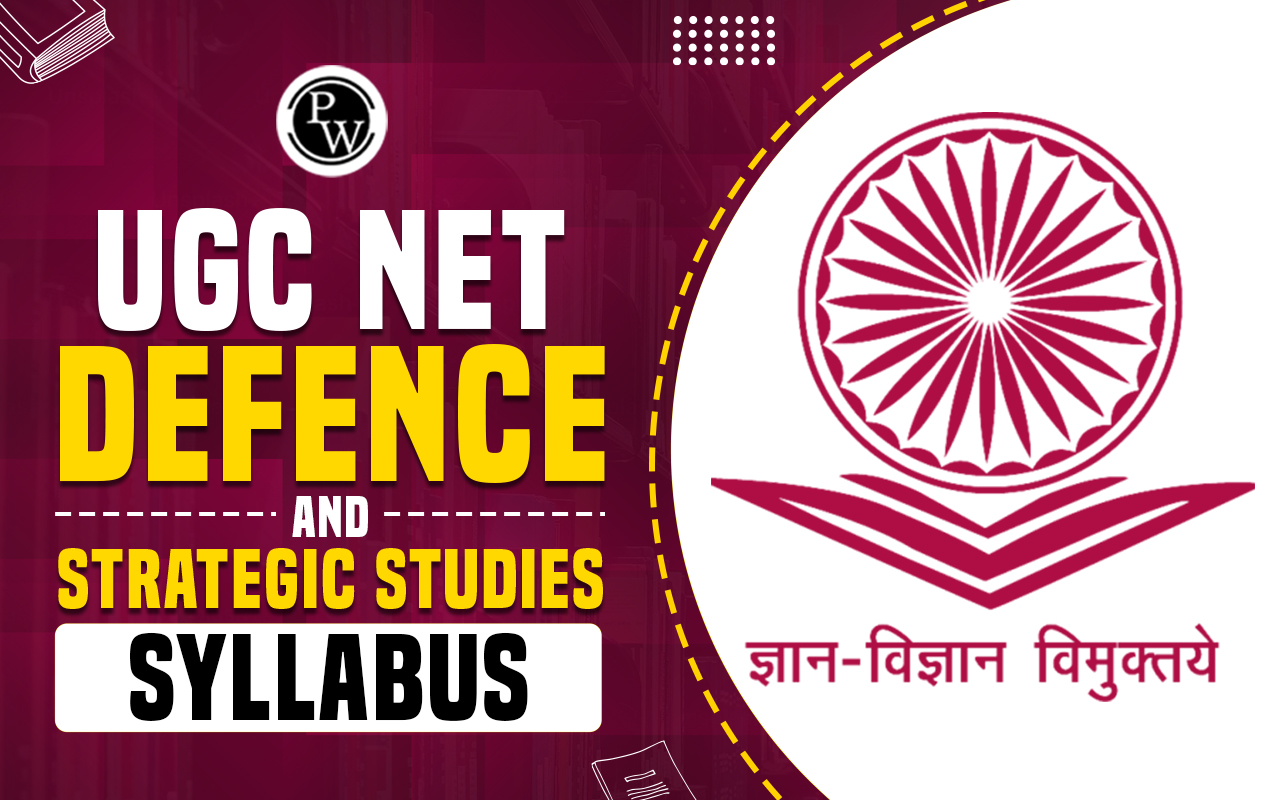

UGC NET Comparative Study of Religions Syllabus 2024: UGC has unveiled the UGC NET Comparative Study of Religions Syllabus 2024 on its official site. For those aiming to be a Junior Research Fellow (JRF) or Assistant Professor in Comparative Study of Religions, it's crucial to study the new syllabus and exam pattern thoroughly. This will enhance your chances of doing well in the UGC NET Comparative Study of Religions Exam 2024.
UGC NET Comparative Study of Religions Syllabus 2024
The UGC NET 2024 Notification was released by the National Testing Agency (NTA) on April 20, 2024. The exam is scheduled for June 18, 2024, and it will follow an OMR-based format. To succeed in the UGC NET 2024 Comparative Study of Religions exam, it's important for candidates to understand the exam pattern and syllabus. Understanding the exam structure and knowing which topics to focus on will help candidates prepare effectively for the exam.UGC NET Comparative Study of Religions Syllabus 2024 Overview
The UGC NET 2024 exam, managed by the National Testing Agency (NTA), is scheduled for June 18, 2024. It's a national exam held twice yearly to pick candidates for Assistant Professor and Junior Research Fellowship (JRF) roles. Here's a quick rundown of the UGC NET exam.| UGC NET Comparative Study of Religions Syllabus 2024 Overview | |
| Exam Name | UGC NET 2024 |
| Conducting Body | National Testing Agency (NTA) |
| Post Category | UGC NET Comparative Study of Religions Syllabus 2024 |
| UGC NET Exam Date 2024 | 18th June 2024 |
| Exam Level | National |
| Mode of Exam | OMR Based Mode |
| Medium of Exam | English and Hindi |
| Time Duration | 3 Hours |
| Number of Papers and Total Marks |
|
| Negative Marking | No Negative Marking |
| Official Website | https://ugcnet.nta.nic.in/ |
UGC NET Comparative Study of Religions Syllabus 2024 PDF
UGC NET Comparative Study of Religions Syllabus 2024 PDF is essential for candidates preparing for the UGC NET 2024 exam. You can effortlessly access the UGC NET Comparative Study of Religions Syllabus 2024 PDF in both English and Hindi by clicking the provided link.UGC NET Comparative Study of Religions Syllabus 2024 Paper 1
The UGC NET Syllabus 2024 for Paper 1 assesses candidates' teaching and research abilities, emphasizing their skills in these areas. Here's an overview of the UGC NET Paper 1 syllabus:| UGC NET Comparative Study of Religions Syllabus 2024 Paper 1 | |
| Unit Name | Syllabus |
| Unit-I (Teaching Aptitude) | Teaching concepts, objectives, levels; Learner characteristics; Factors affecting teaching; Teaching methods; Teaching support systems; Evaluation systems |
| Unit-II (Research Aptitude) | Research meaning, types, characteristics; Research methods; Steps of research; Thesis and article writing; ICT in research; Research ethics |
| Unit-III (Comprehension) | Reading comprehension with questions |
| Unit-IV (Communication) | Communication meaning, types, characteristics; Effective communication; Communication barriers; Mass-media and society |
| Unit-V (Mathematical Reasoning and Aptitude) | Types of reasoning; Mathematical aptitude; Number and letter series |
| Unit-VI (Logical Reasoning) | Argument structure; Deductive and inductive reasoning; Analogies; Venn diagrams; Indian logic |
| Unit-VII (Data Interpretation) | Data sources; Acquisition; Classification; Interpretation; Governance |
| Unit-VIII (Information and Communication Technology (ICT)) | Basics of ICT; Internet; Email; Digital initiatives; Governance |
| Unit-IX (People, Development and Environment) | Development and environment interaction; Environmental issues; Resources; Environmental protection acts; International agreements |
| Unit-X (Higher Education System) | History of higher education in India; Learning programs; Policies; Governance |
UGC NET Comparative Study of Religions Syllabus 2024 Unit Wise
The UGC NET Comparative Study of Religions Syllabus 2024 is split into ten units, each covering various facets of Criminology. Below is a summarized table presenting the main topics and subtopics for each unit in the UGC NET Criminology Syllabus.
| UGC NET Comparative Study of Religions Syllabus 2024 Unit Wise | |
| Unit | Topics |
| Unit I | Study of Religion |
| - Meaning, Definition, Nature, and Scope | |
| - Theories: Origin of Religion | |
| - Aims and objectives of studying religion | |
| - Dimensions of Religion: Doctrinal, social, moral code, devotional | |
| praxis | |
| - Religion’s Relationship with other Disciplines | |
| (Theology, Ethics, Philosophy, Sociology, Psychology, Culture, Arts) | |
| Unit II | Pre-Historical Religious Forms |
| - Early forms of Religious Expression | |
| - Nature of Holy | |
| - Task and Objectives | |
| - Religion of Major Civilizations | |
| - Meaning and Nature | |
| - Zoroastrianism: Beliefs and Practices | |
| Unit III | Modern Trends in the Study of Religion |
| - Approaches to the Study of Religion | |
| - Challenges to Religion | |
| - Modern Trends in the Study of Religion | |
| - Religious Authority | |
| Unit IV | Hinduism |
| - Nature of Vedic Religion and Culture | |
| - Vedic Literature | |
| - Shaivism, Vaishnavism, Shaktism, Tantraism, etc. | |
| - Six Systems of Hindu Philosophy | |
| - Epics and Puranas | |
| - Bhakti and Reform Movements | |
| Unit V | Jainism |
| - Sramana Culture and Tirthankara Tradition | |
| - Main Sects of Jainism | |
| - Prakrit Agama Literature and Prominent Acaryas | |
| - Basic Doctrines, Principles and Philosophy | |
| - Contribution to Arts and Architecture | |
| - Social Aspects of Jainism | |
| - Contemporary Developments of Jainism | |
| - Jain Pilgrimage and Festivals | |
| Unit VI | Buddhism |
| - Background, Life and Teaching of Gautama Buddha | |
| - Pali Tipitaka Literature and Mahayana Sutras | |
| - Main Sects | |
| - Basic Doctrines, Principles and Philosophy | |
| - Contribution to Arts and Architecture | |
| - Expansion of Buddhism Outside India | |
| - Social Aspects and Revival of Buddhism | |
| Unit VII | Judaism |
| - Origin and Development | |
| - Hebrew Scripture | |
| - Jewish Beliefs | |
| - Jewish Celebrations | |
| - Jewish Ethics | |
| - Importance of Jerusalem | |
| - Major Denominations | |
| Unit VIII | Christianity |
| - Life and Message of Jesus Christ | |
| - Old and New Testament Scriptures | |
| - Main Christian Churches | |
| - Important Beliefs and Teachings | |
| - Christian Life | |
| - History of Christianity in India | |
| - Contemporary Trends in Christian Theology | |
| Unit IX | Islam |
| - Social, religious condition of Arabia before Islam | |
| - Life of Prophet Mohammad and basic teachings of the Quran | |
| - Introduction of Hadith and Fiqh | |
| - Important Muslim thinkers and scholars | |
| - Development of Sufism and its impact on society | |
| - Challenges of modernity and reform movements among Muslims | |
| - Origin and development of sects | |
| - Contributions of Medieval Islam to sciences, philosophy, arts | |
| Unit X | Sikhism |
| - Socio-religious milieu and life and mission of Guru Nanak | |
| - Development of the Sikh Panth | |
| - Sikh Scripture and Literature | |
| - Sikh beliefs and code of conduct | |
| - Sikh institutions, ceremonies, and festivals | |
| - Sikh sects and Modern socio-religious movements | |
| - Sikh diaspora and Modern Issues | |
UGC NET Comparative Study of Religions Exam Pattern
The UGC NET Comparative Study of Religions Exam Pattern for 2024 gives a transparent view of its structure. Paper 1 contains 50 questions, with each worth 2 marks, totaling 100 marks. Paper 2 comprises 100 questions, also valued at 2 marks each, adding up to 200 marks. Both papers follow a marking scheme where each right answer gains 2 marks, and there's no penalty for incorrect responses.| UGC NET Comparative Study of Religions Exam Pattern | ||
| Aspects | UGC NET Paper 1 | UGC NET Paper 2 |
| Number of Questions | 50 | 100 |
| Maximum Marks | 100 | 200 |
| Marking Scheme | Two marks for each correct answer | Two marks for each correct answer |
| Negative Marking | No negative marking | No negative marking |
UGC NET Comparative Study of Religions Syllabus 2024 FAQs
1. What is the UGC NET Comparative Study of Religions Syllabus for 2024?
The UGC NET Comparative Study of Religions Syllabus for 2024 covers various aspects such as the study of religion, pre-historical religious forms, modern trends in the study of religion, and in-depth analyses of major religions like Hinduism, Jainism, Buddhism, Judaism, Christianity, Islam, and Sikhism.
2. Where can I download the UGC NET Comparative Study of Religions Syllabus PDF?
You can easily download the UGC NET Comparative Study of Religions Syllabus 2024 PDF from the official website of the National Testing Agency (NTA).
3. What is the exam pattern for the UGC NET Comparative Study of Religions Exam 2024?
The UGC NET Comparative Study of Religions Exam 2024 consists of two papers. Paper 1 contains 50 questions, each carrying 2 marks, totaling 100 marks. Paper 2 comprises 100 questions, also carrying 2 marks each, summing up to 200 marks. There is no negative marking for incorrect answers.
4. When is the UGC NET 2024 exam scheduled to take place?
The UGC NET 2024 exam is scheduled for June 18, 2024.
5. How can I prepare effectively for the UGC NET Comparative Study of Religions Exam 2024?
To prepare effectively for the UGC NET Comparative Study of Religions Exam 2024, candidates should thoroughly review the syllabus and exam pattern, understand the key concepts, focus on important topics, and practice previous years' question papers and mock tests. Additionally, referring to standard textbooks and study materials can also be helpful.
Talk to a counsellorHave doubts? Our support team will be happy to assist you!

Free Learning Resources
PW Books
Notes (Class 10-12)
PW Study Materials
Notes (Class 6-9)
Ncert Solutions
Govt Exams
Class 6th to 12th Online Courses
Govt Job Exams Courses
UPSC Coaching
Defence Exam Coaching
Gate Exam Coaching
Other Exams
Know about Physics Wallah
Physics Wallah is an Indian edtech platform that provides accessible & comprehensive learning experiences to students from Class 6th to postgraduate level. We also provide extensive NCERT solutions, sample paper, NEET, JEE Mains, BITSAT previous year papers & more such resources to students. Physics Wallah also caters to over 3.5 million registered students and over 78 lakh+ Youtube subscribers with 4.8 rating on its app.
We Stand Out because
We provide students with intensive courses with India’s qualified & experienced faculties & mentors. PW strives to make the learning experience comprehensive and accessible for students of all sections of society. We believe in empowering every single student who couldn't dream of a good career in engineering and medical field earlier.
Our Key Focus Areas
Physics Wallah's main focus is to make the learning experience as economical as possible for all students. With our affordable courses like Lakshya, Udaan and Arjuna and many others, we have been able to provide a platform for lakhs of aspirants. From providing Chemistry, Maths, Physics formula to giving e-books of eminent authors like RD Sharma, RS Aggarwal and Lakhmir Singh, PW focuses on every single student's need for preparation.
What Makes Us Different
Physics Wallah strives to develop a comprehensive pedagogical structure for students, where they get a state-of-the-art learning experience with study material and resources. Apart from catering students preparing for JEE Mains and NEET, PW also provides study material for each state board like Uttar Pradesh, Bihar, and others
Copyright © 2025 Physicswallah Limited All rights reserved.
Get App











